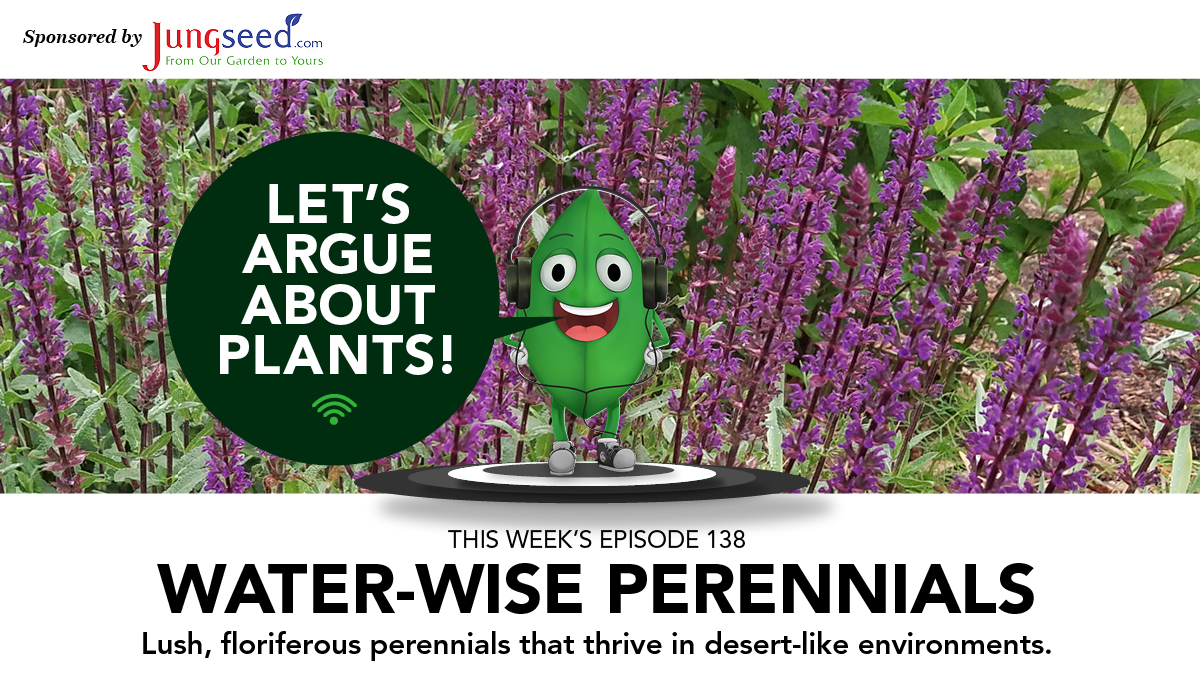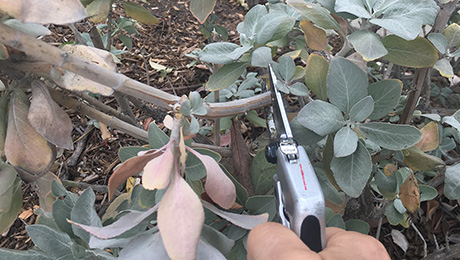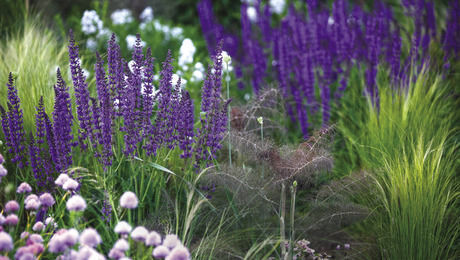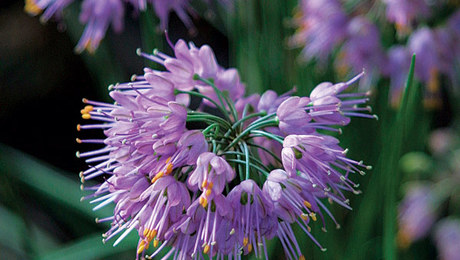
When my husband brought home Salvia nemorosa ‘Caradonna’ (Zones 5–9) I was somewhat skeptical. I wondered how this new German selection of perennial salvia could be different from all the other cultivars. The following spring I was pleasantly surprised.
Although I didn’t need more lavender-blue in my late-spring garden, I was delighted by the deep-violet-blue flowers of ‘Caradonna’. By violetblue I mean real purple, regal purple—the color medieval royalty treasured because of its expense and scarcity. Other perennial salvias, like ‘East Friesland’, have a similar hue, but the flowers of ‘Caradonna’ also offer intriguing red-violet-stained stems that appear purplish-black from a distance.
In addition to the distinctive stem color, each flower has a green-and-red-striped calyx (the part connecting the flower and stem) subtended by a red-violet, tear-shaped bract (a modified leaf on the flower that looks like a petal), giving the plant a red-violet glow after the flowers fade. But as the spikes elongate and the flowers drop, it’s time to deadhead to spur on more flowers. With only a few minutes of deadheading a day, ‘Caradonna’ continues to bloom for months, even producing a new crop of purple stems in late August.
Deep purple can be tricky to use in the garden, since too much can be somber. So, I use ‘Caradonna’ as an accent to add depth and contrast with plants like lemon-yellow ‘Moonshine’ yarrow (Achillea ‘Moonshine’, Zones 4–8) or the golden daisies of ‘Sunray’ coreopsis (Coreopsis grandiflora ‘Sunray’, Zones 4–9). The grape foliage of ‘Bertram Anderson’ sedum (Sedum X ‘Bertram Anderson’, Zones 5–9) sets up a wonderful dusky color echo while globes of flowering onion (Allium aflatunense, Zones 4–8) provide a redviolet note. Combined with the felty silver foliage of ‘Countess Helen von Stein’ lamb’s ear (Stachys byzantina ‘Countess Helen von Stein’ syn. ‘Big Ears’, Zones 4–8) the color of ‘Caradonna’ intensifies.
‘Caradonna’ grows to 18 to 20 inches tall in my garden with the upright, spiky form typical of its relatives. The stems don’t require support provided the plants are located in plenty of sun. But where my plants received morning shade from a nearby privet hedge, the clump collapsed. Provide ‘Caradonna’ salvia with good drainage, and water it during dry spells to improve performance.

















Comments
Log in or create an account to post a comment.
Sign up Log in